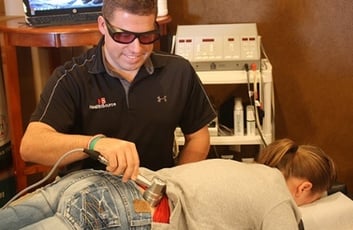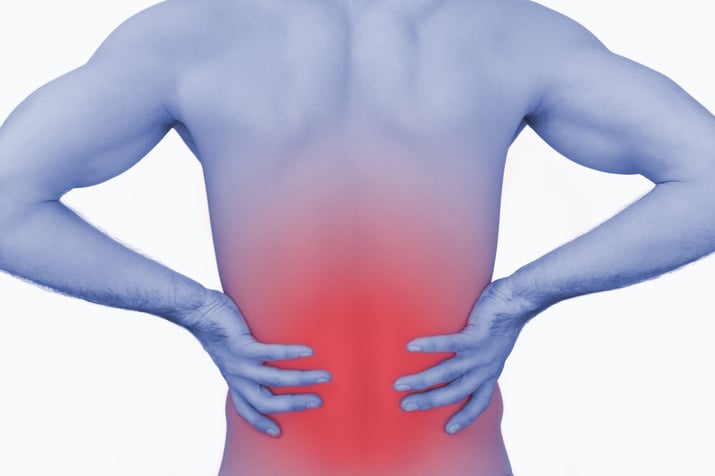Pain relief. Tissue healing. More rapid recovery. All at the push of a button. Practices everywhere are adopting low-level laser therapy as a modality that is low cost and high satisfaction, for both patients and practitioners.
For example, PHS Chiropractic's Apollo 2,000 mW Cold Laser is a portable and lightweight device that provides effective low-level laser therapy in a two to four minute treatment. Chiropractic Economics' Tina Beychok explains further:|
via PHS Chiropractic |
Low-level lasers help patients. In terms of conservative pain relief and tissue healing, therapeutic applications illustrate some compelling results.
Tissue Healing
Body tissue has a basic healing process. When your skin is injured, certain physiological and chemical events happen in a specific order to help you get better. Evidence suggests low-level laser irradiation helps accelerate these processes to reduce healing time by affecting cells. Reports indicate lasers help improve micro-circulation and tensile wound strength—two key factors for optimal wound regeneration.
It is important to remember certain therapeutic lasers impact healing rates more than others. Lasers that are set too low will not activate a healing response in the tissue.
Pain and Inflammation
Serotonin and acetylcholine are two neurotransmitters that help regulate various elements in your nervous system. By reducing the excitation of nerve fibers, for example, studies show low-level laser therapy may reduce inflammation and better regulate the rate at which other neurotransmitters modulate pain. A daily 10-minute dose of laser therapy appeared to reduce inflammation by as much as 20 to 30 percent.
Effective for such conditions as cervical osteoarthritis, sports injuries, cutaneous ulcers and hip osteoarthritis, lasers may also stimulate prostaglandin P12 production. Certain enzymes, along with neurotransmitters, control how muscles work and how they regulate pain. Endothelial cells use prostaglandin P12 in the blood to regulate smooth muscles and promote circulation.
Lower Back Pain
|
via shutterstock.com |
Reports indicate low-level laser therapy works on lower back pain and a variety of musculoskeletal conditions. A study of 524 patients with lower back pain found more than 80 percent reported excellent results within one week after completing the final treatment. Another study showed 136 rheumatic patients reported reduced symptoms in terms of pain, muscular contraction, edema and mobility.
With the spiraling cost of health care today, both patients and physicians are looking toward more conservative treatments that not only present less risk but also have a lower cost. Low-level laser therapy may be just the sort of treatment that is needed for certain conditions.




